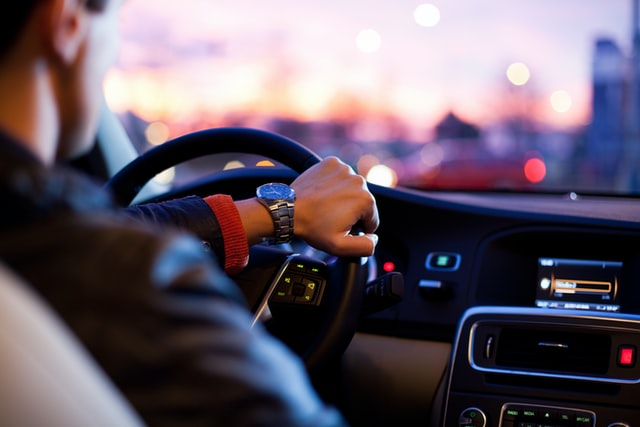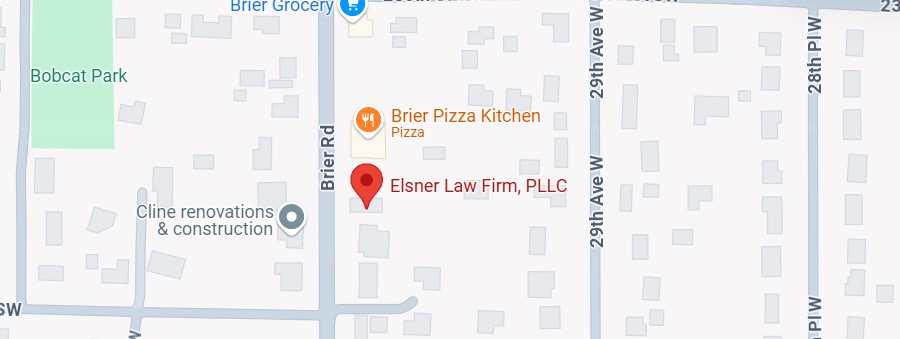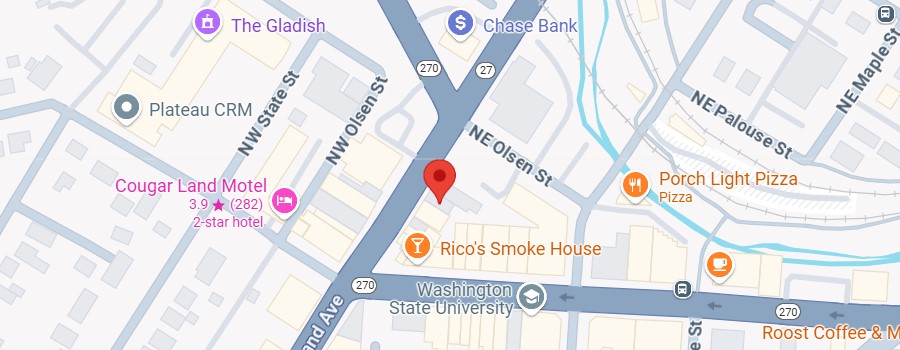Rear-end collisions are, regrettably, one of the most common types of vehicle crashes on U.S. roadways, with about 1.7 million occurring each year. These vehicle crashes can result in significant damage, even in minor accidents. Even seemingly minor rear-end collisions can cause hidden or serious damage that may compromise your safety in the future. That’s why it’s crucial to understand the potential issues that can arise and know what to do if you find yourself in this situation.
What Causes Rear-End Collision Damage?
The National Transportation Safety Board reports that 87% of rear-end collisions occur due to distracted driving. Common distractions include texting, talking on the phone, adjusting the radio, and more. Additionally, factors such as speeding, heavy traffic, reckless driving habits, and driving under the influence can also contribute to these accidents.
A rear end collision occurs when one vehicle strikes the back of another, often in heavy traffic or at busy intersections. When a rear end impact happens, the physical force can cause significant vehicle damage and personal injuries. In some scenarios, only one vehicle is involved, such as when a vehicle hits a stationary object or loses control without striking another car. These collisions typically result from a square-on impact to your vehicle, but in some cases, your vehicle could be hit at an angle, which greatly affects the type and severity of damage.
Types of Hidden Damage From Being Rear-Ended
The tricky thing about rear-end collision hidden damage is that it’s often difficult to spot by the untrained eye. Even a seemingly minor ding or minor dent could lead to rear-end frame damage, structural damage, or other underlying issues, impacting your vehicle’s appearance, functionality, and safety. Failing to address these issues promptly can result in serious damage and a compromised vehicle.
Alignment Problems: Rear-end collisions can cause alignment issues, which may manifest as the vehicle pulling to one side, noisy steering, rapid or uneven tire wear, a crooked steering wheel, or squealing tires. Frame misalignment can also cause the vehicle to lean or vibrate, making it harder to control. Misalignment can put stress on various parts of the vehicle, leading to faster wear and serious safety threats. It is important to correct the vehicle’s alignment to maintain safe handling and prevent further damage.
Engine Damage: The complex nature of modern car engines means that rear-end collisions can compromise their performance. Damage from a collision can also affect the transmission components in rear-wheel-drive and all-wheel-drive vehicles. Transmission fluid leaks after a rear end crash may indicate transmission damage, which can lead to shifting problems and further mechanical issues.
Suspension Problems: Frame damage from a rear-end collision can stress the suspension system, causing shocks, struts, and other parts to wear out faster. Suspension damage and damaged suspension are common after such impacts, and control arms or other suspension components may be bent or broken, affecting vehicle stability and safety. Poor alignment can also put additional pressure on suspension components, affecting the vehicle’s ride and safety. A well-maintained suspension system maximizes safety and comfort by maintaining optimal tire-road contact and absorbing shocks, ensuring a smooth ride and better control.
Electrical Issues: Even the smallest tap can loosen important electrical components, such as taillights, brake lights, and the battery. Electrical damage and issues with electrical wiring are especially concerning in modern vehicles, which rely on advanced electronic systems for safety and performance. It’s crucial to have a technician examine the electrical components of your vehicle after a collision, as professional inspection is necessary to detect and repair hidden electrical problems.
Trunk Damage: Although trunk damage may not affect your ability to drive, it presents safety hazards and reduces the value of your car. Cosmetic damage, paint scratches, and minor dents from a rear-end collision can also impact your car’s resale value and compromise the car’s structure. Always repair any trunk damage, as it could cause safety issues while driving.
Bumper damage and a damaged bumper are common after a rear end crash. The bumper plays a critical role in absorbing impact and protecting the car’s structural integrity and safety. If not properly repaired, bumper damage can compromise the car’s structural integrity and increase the risk of injury in future collisions.
A damaged exhaust system may produce strange noises after a collision, which can indicate underlying issues that affect engine performance and safety. Prompt repairs are necessary to prevent further complications.
Repair estimates and repair costs are important in determining whether a compromised vehicle should be repaired or declared a total loss. Insurers use these assessments to decide if the extent of damage and costs justify repairs or if the vehicle should be totaled.
Structural damage and serious damage can result from even minor impacts, and if these issues are not addressed promptly, the vehicle may become a compromised vehicle, putting occupants at risk.
A rear end crash can also result in injuries such as broken bones, especially if the impact is severe or safety features are compromised.
Safety Concerns and Medical Attention After a Rear-End Collision
A rear-end collision can be a jarring experience, and your first priority should always be safety. Even if the accident seems minor, it’s important to move your vehicle to a safe location away from traffic and turn off the engine to prevent any further hazards. Once you’re safe, check yourself and your passengers for injuries. If anyone is hurt, don’t hesitate to call for medical attention right away—some injuries, like whiplash, may not be immediately obvious but can cause significant pain and mobility issues later on.
Rear-end collisions often result in more than just visible damage to your car. The impact can lead to uneven tire wear, exhaust system damage, and even compromise your vehicle’s structural integrity. Issues with the rear bumper, brake lights, or tail lights may not be immediately visible but can pose a serious safety hazard if left unaddressed. That’s why it’s crucial to have a professional inspection by an experienced team at a reputable auto body shop. They can assess the full extent of the vehicle damage and help prevent further damage or costly repairs down the line.
In addition to physical injuries, the stress of a rear-end collision can take a toll on your emotional well-being. It’s normal to feel shaken or anxious after an accident, so don’t hesitate to seek support if you need it.
To protect yourself legally and financially, document everything at the scene. Take clear photos of the damage, including the rear bumper, tail lights, and any other affected areas. Gather witness statements and keep records of any medical attention received. This documentation will be invaluable when filing insurance claims or if legal issues arise.
By acting quickly and prioritizing both your health and your vehicle’s safety after a rear-end collision, you can minimize the risk of further damage and ensure a smoother recovery process. If you’re ever unsure about the next steps, consult with a professional—whether it’s a medical expert or a trusted auto body shop—to guide you through the process and help restore your car to its pre-accident condition.
What to Do if You Have Rear-End Collision Damage
If your vehicle has been rear-ended, start by completing a “walk-around” to inspect for damage that may not be immediately obvious. This involves checking for even trunk and door gaps, examining the taillights and rear bumper, looking for damage to vehicle quarter panels and roof, and inspecting the rear suspension area. Assessing vehicle damage thoroughly is crucial, as both visible and hidden issues can impact your car’s safety and value. It’s important to seek the expertise of a skilled collision repair technician to thoroughly assess any damage and develop a plan to restore your vehicle to its original condition.
Ultimately, damage that goes unrepaired is likely to worsen over time and lead to costly repairs down the road. Being proactive and having a professional address the damage as soon as possible is essential. If you notice any signs of injury, seek medical assistance immediately to ensure your health and safety. Remember, unless you’re a trained collision repair technician, never attempt to complete the repairs on your own, as this could potentially make the damage worse.
In the unfortunate event of a rear-end collision, it’s vital to prioritize your safety and the well-being of your vehicle. Seek professional help to thoroughly assess and address any hidden damage and remember that the team at Elsner Law Firm is here to support you every step of the way. Be sure to contact your insurance company promptly to report the accident and begin the claims process. Call us today for your free consultation 206-447-1425.





